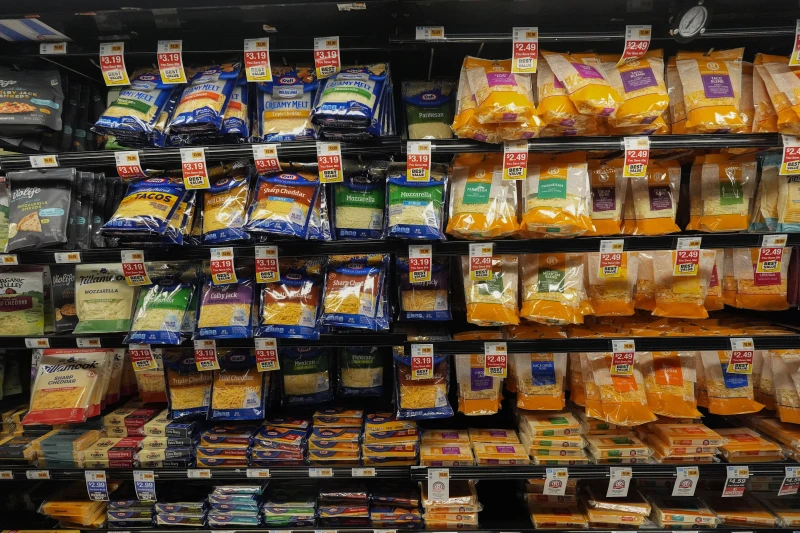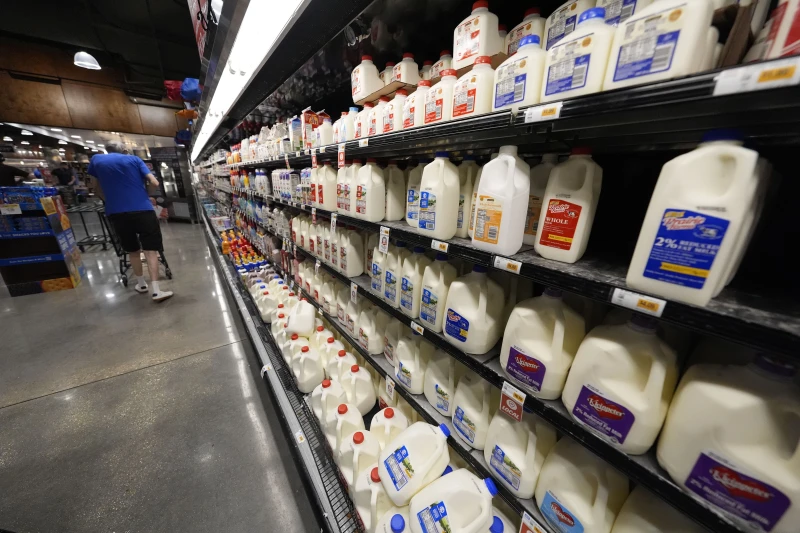The issue of plastic pollution has become a pressing concern for our planet. With plastic production projected to triple by 2050, it is no wonder that the global theme for Earth Day this year is planet vs.
plastic. The impact of plastic pollution on our environment is severe, and it is high time that we take action to address it.
Judith Enck, a prominent environmentalist, has expressed her concern over the use of plastic packaging in supermarkets. She argues that plastic packaging is pointless, especially when it comes to fruits and vegetables that are already naturally wrapped in peels.
Similarly, the baby food aisle, with its single-use pouches, has replaced glass jars, which are far more sustainable.
The recycling rates for plastic are abysmally low, with less than 10% of plastic being recycled. This means that most of it ends up in landfills, where it can take hundreds of years to decompose.
In contrast, materials like cardboard and paper are biodegradable and have much higher recycling rates. It is clear that we need to find alternatives to plastic that are more sustainable.
Plastic production is also a major contributor to the use of fossil fuels and chemicals. As the world transitions away from using fossil fuels for electricity and transportation, plastics offer a new market for oil and gas companies.
This is concerning, as it means that plastic production will continue to ramp up, exacerbating the problem of plastic pollution.
The Earth Day environmental movement is calling for “the end of plastics for the sake of human and planetary health.” The impact of plastic pollution on our environment is already evident, with millions of tons of plastic ending up in the ocean each year.
This has a devastating impact on marine life, with many animals mistaking plastic for food and suffering from ingestion or entanglement.
Furthermore, researchers have found that people are increasingly breathing, eating and drinking tiny particles of plastic. While more research is necessary to determine the full impact of this on human health, it is clear that plastic pollution is a serious threat to our well-being.
This week, thousands of negotiators and observers representing most of the world’s nations are gathering in Ottawa to craft a treaty to try to end the rapidly escalating levels of plastic pollution.
This is a positive step towards addressing this issue, but it is not enough. We all have a responsibility to reduce our use of plastic and find more sustainable alternatives.
In conclusion, the problem of plastic pollution is a pressing concern for our planet. We need to find alternatives to plastic that are more sustainable, and we need to reduce our use of plastic in our daily lives.
The impact of plastic pollution on our environment and our health is severe, and we cannot afford to ignore it any longer. Let us all do our part to protect our planet and ensure a sustainable future for generations to come.
Plastic: A Modern Dilemma
Plastic has become an indispensable part of modern society, permeating every aspect of our lives. From grocery shopping to household chores, its ubiquitous presence is undeniable.
The convenience it offers often overshadows the detrimental impact it has on the environment. However, there is a growing awareness among individuals like Enck, a former EPA regional administrator turned environmental advocate, who are taking proactive steps to reduce their plastic usage.
Enck’s recent trip to the Honest Weight Food Co-op in Albany exemplifies a conscious effort to minimize plastic consumption.
Opting for almond butter and yogurt in glass containers, requesting fish to be wrapped in paper instead of plastic, and avoiding produce encased in what she terms “plastic coffins” are simple yet impactful choices.
By carrying reusable shopping bags and educating her children on the importance of choosing sustainable alternatives, Enck sets a positive example for others to follow.
In the produce aisle, Enck emphasizes the use of reusable cloth bags to avoid thin plastic bags for items like apples and avocados. She advocates for purchasing loose produce like carrots and peppers over pre-packaged options.
While the challenge lies in finding plastic-free packaging for items such as fresh berries and crackers, Enck remains hopeful for eco-friendly alternatives like cardboard boxes for berries and recyclable outer packaging for crackers.
Notably, Enck acknowledges the progress made in the household goods aisle, particularly with the availability of detergent concentrates and powdered soaps in recyclable cardboard boxes.
She advises against plastic pods and encourages recycling wherever possible, citing the beverage aisle as an area with significant recycling potential.
To expand sustainable shopping options, Enck suggests promoting paper, cardboard, glass, and metal packaging, which are easily recyclable and can be made from recycled materials.
She stresses the importance of passing stringent packaging laws at the state or national level to compel companies to prioritize eco-friendly alternatives.
Enck highlights New York’s ongoing efforts to reduce plastic packaging through legislation as a step in the right direction, emphasizing that voluntary commitments by companies are insufficient in addressing the plastic crisis.

In conclusion, Enck’s advocacy for reducing plastic usage serves as a beacon of hope in a world drowning in plastic waste.
By making conscious choices and advocating for systemic change, individuals can contribute to a sustainable future where plastic no longer dominates our environment.
As Enck aptly puts it, “Even small steps make a difference,” and it is through collective action that we can pave the way towards a plastic-free world.
